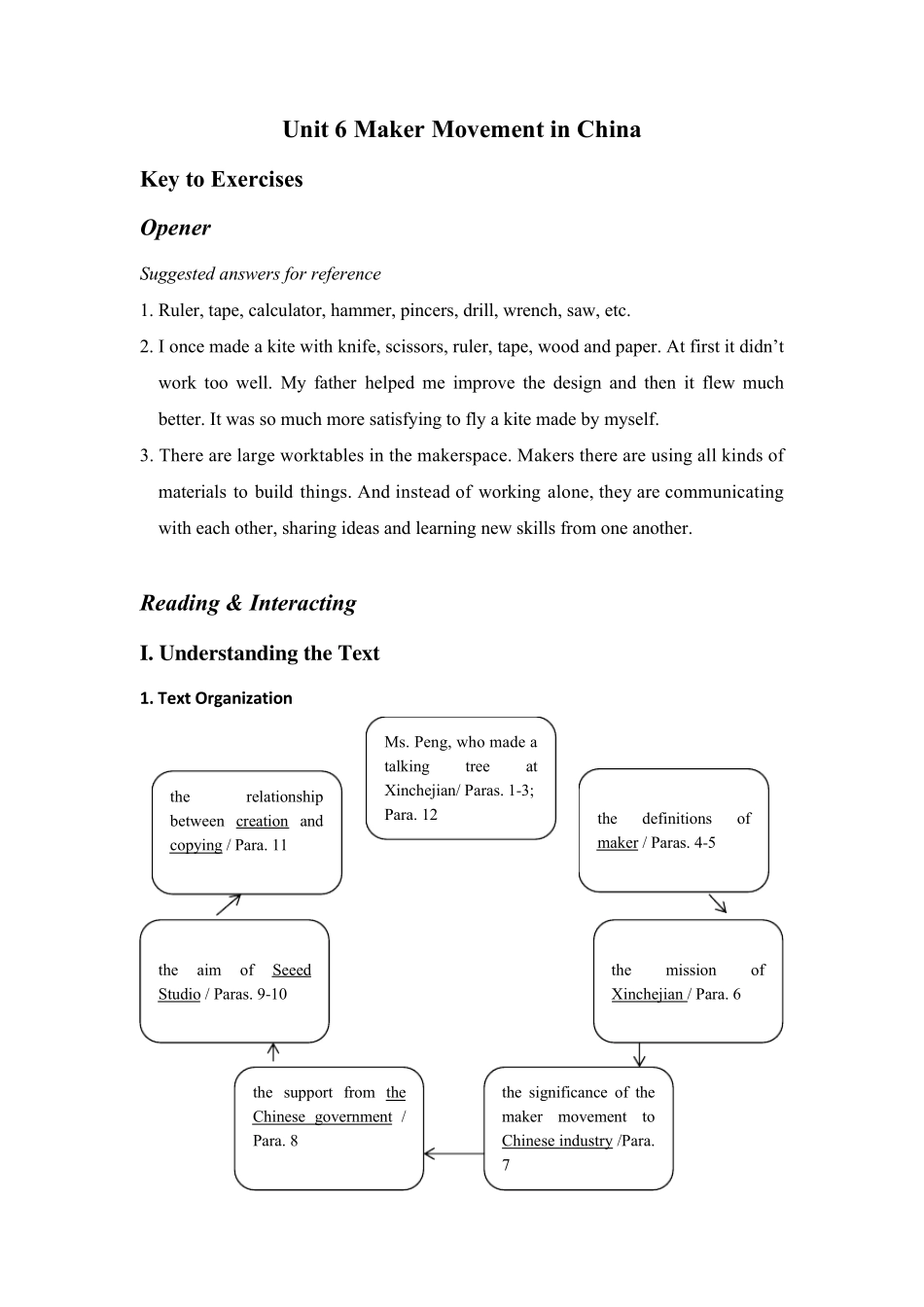Unit 6 Maker Movement in China Key to Exercises Opener Suggested answ ers for reference 1. Ruler, tape, calculator, hammer, pincers, drill, wrench, saw, etc. 2. I once made a kite with knife, scissors, ruler, tape, wood and paper. At first it didn’t work too well. My father helped me improve the design and then it flew much better. It was so much more satisfying to fly a kite made by myself. 3. There are large worktables in the makerspace. Makers there are using all kinds of materials to build things. And instead of working alone, they are communicating with each other, sharing ideas and learning new skills from one another. Reading & Interacting I. Understanding the Tex t 1. Text Organization Ms. Peng, who made a talking tree at Xinchejian/ Paras. 1-3; Para. 12 the relationship between creation and copying / Para. 11 the definitions of maker / Paras. 4-5 the aim of Seeed Studio / Paras. 9-10 the support from the Chinese government / Para. 8 the significance of the maker movement to Chinese industry /Para. 7 the mission of Xinchejian / Para. 6 2. Comprehension Check 2.1 Focu sing on the main ideas The maker movement is now gaining ground in China and makerspaces like Xinchejian and Seeed Studio are open to the public. A maker is someone who builds, creates or hacks physical materials. They are different from the traditional inventors who tinkered in garages. Makers often use software to design objects to be produced by desktop machines like 3-D printers. And they often cooperate and share their ideas online. The Chinese government is supporting this movement by building more government-supported innovation houses and organizing maker carnivals. And it is hoped that this movement ...


